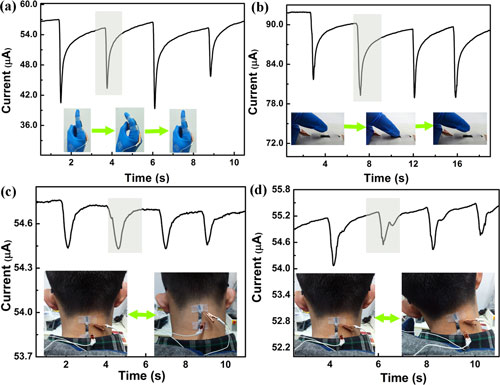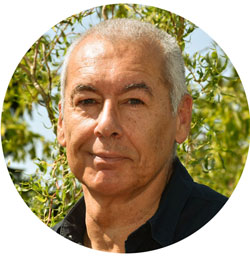| Posted: Jun 02, 2017 | |
Self-healing, highly sensitive nanostructured electronic sensors(Nanowerk News) Researchers in China propose a facile and effective strategy for the preparation of self-healing and highly sensitive strain sensors based on metal-ligand coordination and hierarchical structure design for diverse human activity monitoring. |
|
| The team reported their findings in ACS Applied Materials & Interfaces ("Self-Healing, Highly Sensitive Electronic Sensors Enabled by Metal-Ligand Coordination and Hierarchical Structure Design"). | |
| First, they developed a stretchable and autonomously self-healing elastomer cross-linked by metal-ligand coordination bonds. The as-prepared elastomer exhibited desirable self-healing ability in various harsh conditions. | |
| Then, on the basis of this self-healing material, the researchers constructed electronic sensors with a hierarchical structure by assembling a self-healing substrate and a nanostructured conductive layer. | |
| The fabricated sensors showed eminent electrical self-healing capacity, high sensitivity, and good stability, which could be used to capture both subtle physiological signals and large-scale body motions after the cutting/healing process. | |
 |
|
| Representative current signals and pictures (inset) of self-healed sensors during detecting finger bending (a), finger touching (b), neck bending (c), and neck shaking (d). (© ACS) (click on image to enlarge) | |
| The team evaluated the capability of their sensors in several ways: One was in speech recognition via monitoring the motions of the vocal muscle. When the tester pronounced “hi”, “hello”, and “how are you”, current signals of a self-healed sensor were recorded in real-time. | |
| Another was in capturing subtle physiological activities, where the insulating side of a self-healed sensor was directly attached to the neck to monitor the muscle motions near the throat. When the tester coughed and swallowed, current changes of the self-healed sensor were recorded in real-time using an electrical analyzer. | |
| The authors point out that, even after suffering harsh treatments – repeated bending and washing – the self-healed sensors could still detect tiny human activities. | |
| These remarkable properties enable the prepared sensors to be promising in manufacturing smart electronic devices, such as wearable devices, electronic skin, and healthcare equipment. |
 By
Michael
Berger
– Michael is author of three books by the Royal Society of Chemistry:
Nano-Society: Pushing the Boundaries of Technology,
Nanotechnology: The Future is Tiny, and
Nanoengineering: The Skills and Tools Making Technology Invisible
Copyright ©
Nanowerk LLC
By
Michael
Berger
– Michael is author of three books by the Royal Society of Chemistry:
Nano-Society: Pushing the Boundaries of Technology,
Nanotechnology: The Future is Tiny, and
Nanoengineering: The Skills and Tools Making Technology Invisible
Copyright ©
Nanowerk LLC
|
|
|
Subscribe to a free copy of one of our daily Nanowerk Newsletter Email Digests with a compilation of all of the day's news. |
